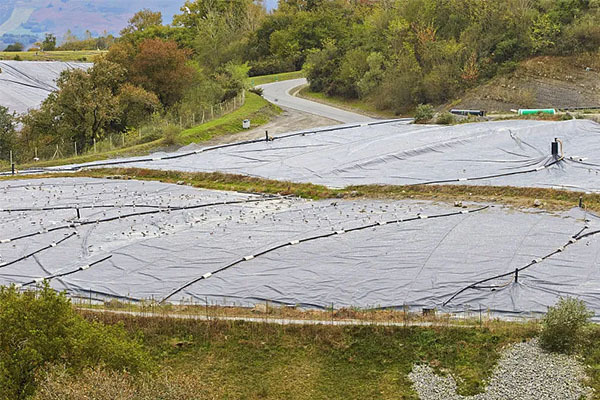Why Woven Geobags Are the Ultimate Choice for Sustainable Packaging
Release time:
2025-06-02
Why Woven Geobags Are the Ultimate Choice for Sustainable Packaging Table of Contents Introduction to Woven Geobags What Are Woven Geobags? Benefits of Using Woven Geobags Eco-Friendly Attributes Durability and Strength Cost-Effectiveness Applications of Woven Geobags Agriculture and Horticulture
Why Woven Geobags Are the Ultimate Choice for Sustainable Packaging
Table of Contents
- Introduction to Woven Geobags
- What Are Woven Geobags?
- Benefits of Using Woven Geobags
- Applications of Woven Geobags
- Comparison with Other Packaging Materials
- Sustainability in the Packaging Industry
- The Future of Woven Geobags
- Conclusion
- Frequently Asked Questions
Introduction to Woven Geobags
In today's world, the demand for sustainable packaging solutions has surged as businesses and consumers alike seek eco-friendly alternatives that minimize environmental impact. **Woven geobags** have emerged as a frontrunner in this arena, offering a versatile and eco-conscious option for various industries. This article delves into the reasons why woven geobags are becoming the ultimate choice for sustainable packaging, exploring their unique features, benefits, and applications across multiple sectors.
What Are Woven Geobags?
Woven geobags, often referred to as geotextile bags, are made from woven polypropylene or polyethylene materials. These bags are designed to store, transport, and protect various materials, making them ideal for numerous applications. Their manufacturing process involves weaving together polypropylene or polyethylene fibers, resulting in a product that is not only durable but also breathable. This characteristic allows moisture to escape, preventing the buildup of condensation and promoting the preservation of the contents within.
Benefits of Using Woven Geobags
Eco-Friendly Attributes
One of the most compelling reasons to choose woven geobags for packaging is their eco-friendly nature. These bags are designed with sustainability in mind, utilizing recyclable materials that significantly reduce their carbon footprint. Unlike traditional plastic bags that contribute to environmental degradation, woven geobags can be recycled and reused, promoting a circular economy.
Furthermore, the production of woven geobags often consumes less energy compared to other packaging materials. This reduction in energy usage translates to lower greenhouse gas emissions, making them a preferred choice for businesses aiming to enhance their sustainability efforts.
Durability and Strength
Woven geobags are renowned for their **exceptional strength and durability**, making them suitable for heavy-duty applications. These bags can withstand harsh environmental conditions, including extreme temperatures, moisture, and UV exposure. This resilience ensures that the contents remain protected during transportation and storage, reducing the risk of damage and loss.
Additionally, the woven structure of these bags allows for a high tensile strength, enabling them to carry significant loads without tearing or breaking. This quality makes woven geobags ideal for industries that require reliable packaging solutions, such as construction and agriculture.
Cost-Effectiveness
In a competitive market, cost savings are crucial for any business. Woven geobags provide an economical packaging solution due to their durability and reusability. Businesses can save on packaging costs by opting for woven geobags instead of single-use or less durable alternatives.
Moreover, the longevity of woven geobags means that they can be reused multiple times, further enhancing their cost-effectiveness. When businesses consider the overall lifecycle of the packaging, woven geobags emerge as a financially savvy option that does not compromise on quality.
Applications of Woven Geobags
Woven geobags boast versatility across various industries, making them an asset in numerous applications.
Agriculture and Horticulture
In agriculture, woven geobags serve multiple purposes, including the storage and transportation of seeds, fertilizers, and grains. Their breathable design prevents moisture buildup, ensuring that the contents remain dry and intact. Additionally, they are often used for soil erosion control and as protective covers for plants.
In horticulture, woven geobags can be utilized for planting and growing media, promoting healthy root growth while offering protection against pests.
Construction Industry
The construction industry benefits significantly from the use of woven geobags. They are commonly employed for sandbags, retaining walls, and erosion control. Their strength and durability allow them to effectively manage soil and water, preventing runoff and preserving the structural integrity of construction sites.
Furthermore, woven geobags can be filled with various materials, making them versatile for different construction needs.
Mining and Transportation
In the mining sector, woven geobags are essential for handling and transporting minerals and aggregates. Their robust construction ensures that heavy loads can be transported safely without the risk of breakage. Additionally, their lightweight nature reduces transportation costs, making them a preferred choice for logistical operations.
In the transportation sector, woven geobags are also utilized for packaging loose materials, providing an effective solution for both domestic and international shipping.
Comparison with Other Packaging Materials
When comparing woven geobags with other packaging materials, several factors come into play, including sustainability, cost, and performance.
Traditional plastic bags are often cheaper but lack the durability and eco-friendliness of woven geobags. Single-use plastic is notorious for contributing to environmental pollution and waste, while woven geobags are recyclable and reusable, offering a far more sustainable option.
Furthermore, materials like cardboard and paper may be biodegradable, but they often lack the strength necessary for heavy-duty applications. In contrast, woven geobags provide the perfect balance between sustainability and performance, making them superior in many aspects.
Sustainability in the Packaging Industry
As consumers increasingly demand sustainable solutions, the packaging industry is experiencing a significant transformation. Woven geobags align perfectly with this trend, providing businesses with a responsible packaging option.
By using woven geobags, companies can enhance their sustainability profiles, reduce waste, and appeal to environmentally conscious consumers. As regulations surrounding waste management and plastic usage become more stringent, investing in sustainable packaging solutions like woven geobags is not only beneficial for the environment but also crucial for long-term business success.
The Future of Woven Geobags
The future of woven geobags looks promising as innovation continues to drive enhancements in material science and production techniques. Ongoing research into bio-based and biodegradable materials may further elevate woven geobags' position in the sustainable packaging market.
As companies strive to meet sustainability goals and consumers demand eco-friendly options, woven geobags are well-positioned to become a leading choice in the packaging industry. Additionally, advancements in design and functionality may pave the way for new applications, expanding the potential of these versatile bags.
Conclusion
Woven geobags represent the ultimate choice for sustainable packaging, combining eco-friendliness, durability, and cost-effectiveness. Their versatility spans various industries, making them an essential component in modern logistics and operations. As businesses seek to adopt sustainable practices, woven geobags offer a solution that meets both environmental and performance needs. The future of packaging lies in innovative, responsible solutions like woven geobags, making them a smart investment for companies looking to thrive in a competitive marketplace.
Frequently Asked Questions
1. What materials are woven geobags made from?
Woven geobags are primarily made from woven polypropylene or polyethylene, which are durable and recyclable materials.
2. Are woven geobags reusable?
Yes, woven geobags are designed for reuse, allowing companies to save on packaging costs and reduce waste.
3. Can woven geobags be recycled?
Absolutely! Woven geobags are recyclable, contributing to a more sustainable packaging solution.
4. What industries commonly use woven geobags?
Woven geobags are widely used in agriculture, construction, mining, and transportation industries.
5. How do woven geobags compare to traditional plastic bags?
Woven geobags offer greater strength, durability, and eco-friendliness compared to traditional single-use plastic bags, making them a more sustainable option.






